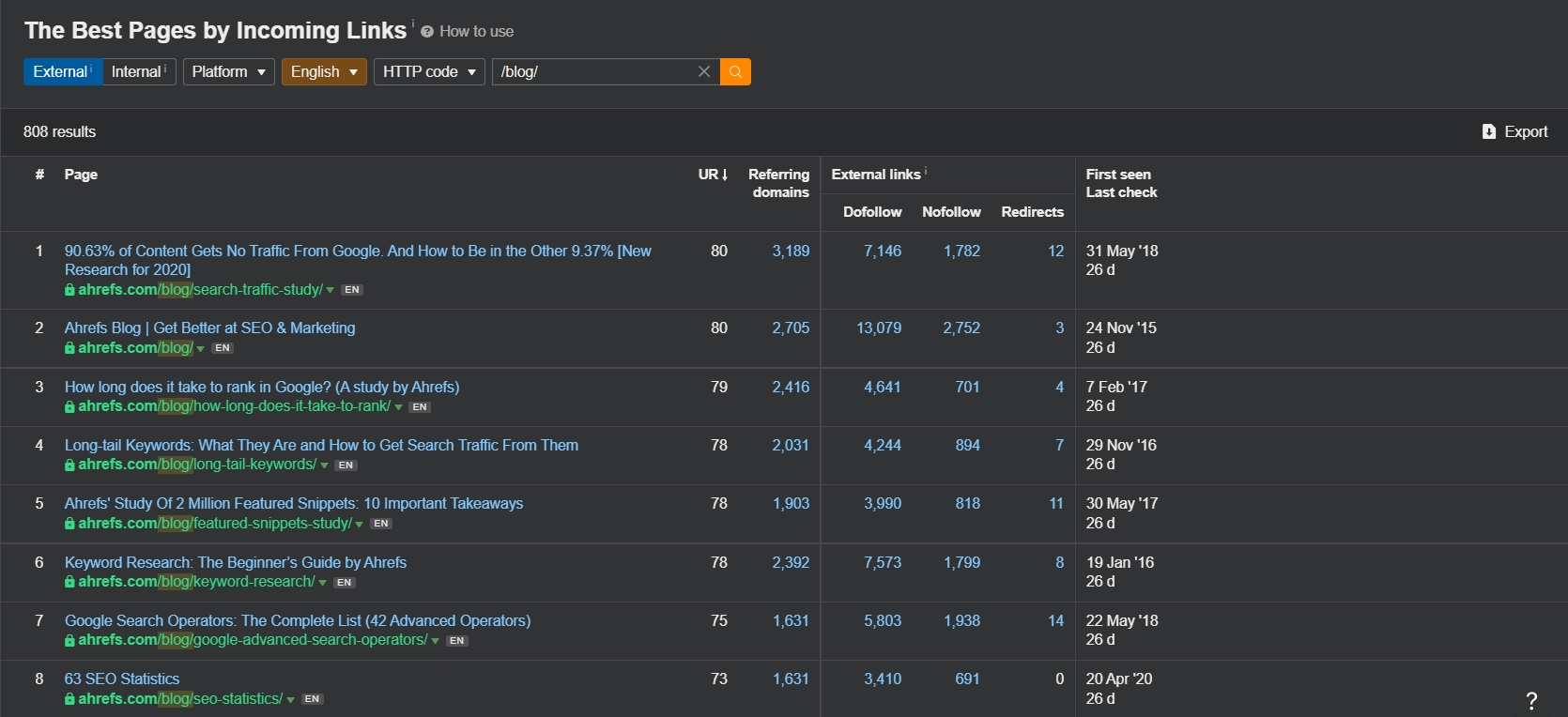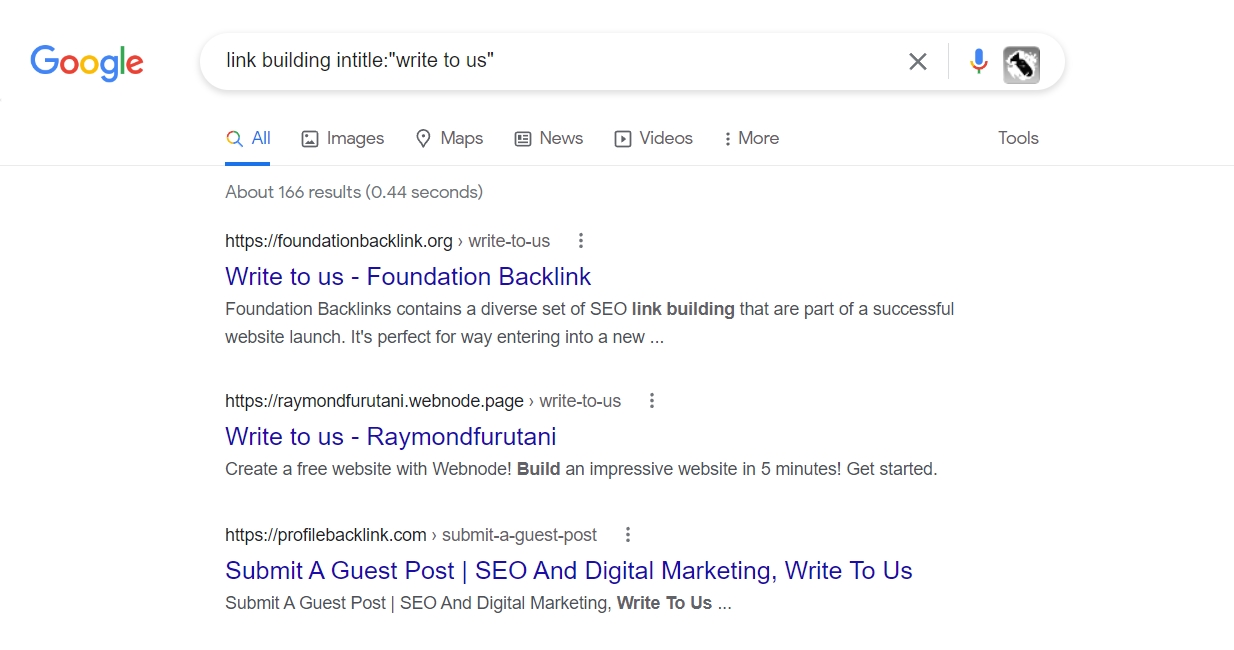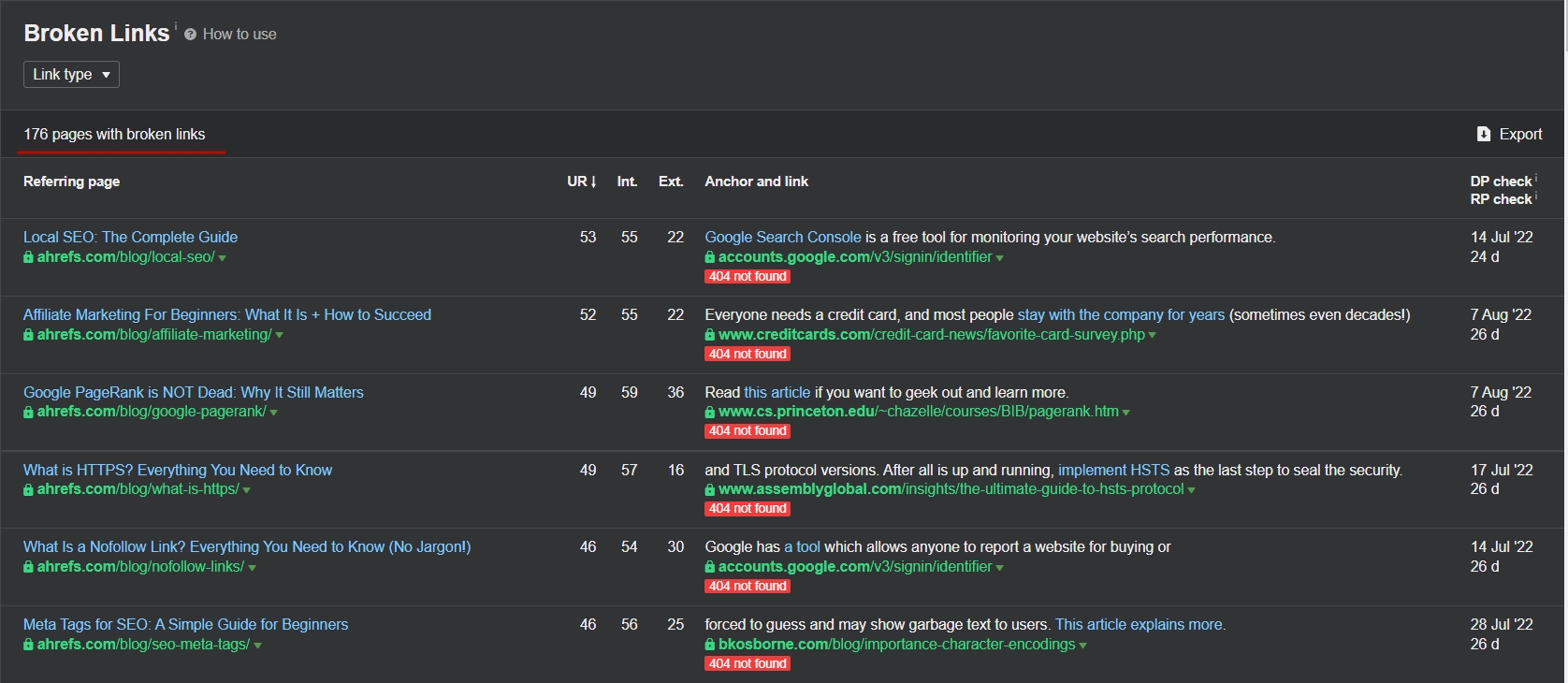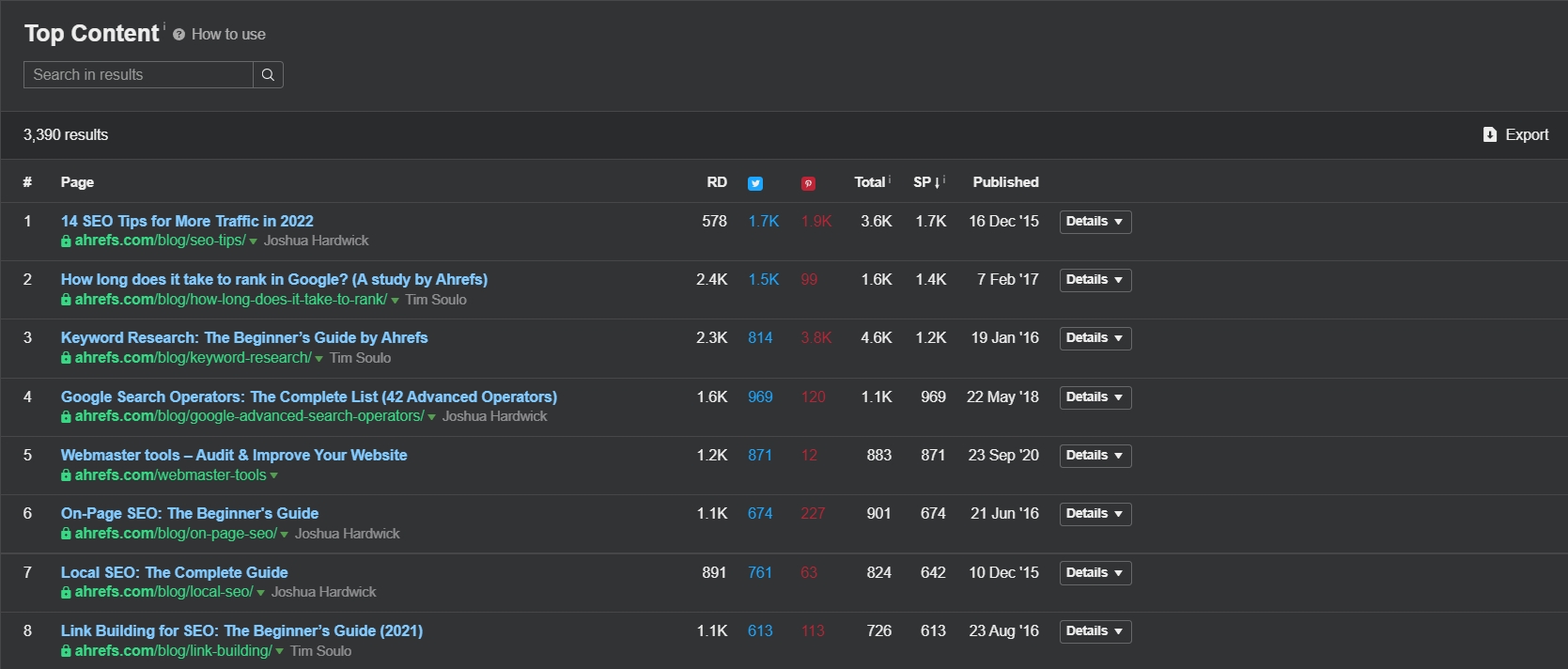How to Create Quality Backlinks for Your Blog
Backlinks, meaning links from pages that refer to your blog, are one of the most important ranking factors for most search engines. Needless to say, quality referrers are hard to come by. However, there are clever ways to build and maintain backlinks.
In this article, we will give you a guide to building a backlinks profile of a blog. This is a crucial part of successful SEO promotion and if you want your blog to be positioned high in the rankings of Google and other search engines, it is necessary to find many good referrals.
How to Get Backlinks to Your Blog
The important rule to remember: there are no good backlinks without hard work - but the effort is worth it. Even with a blog dedicated to a very narrow topic, you can create good referrers using the following methods.
Analyze Your Competitors
Checking your competitor's website is the best place to start. A comprehensive SEO analysis will provide a lot of valuable information.
SEO analysis of competitors provides you with:
- Ideas for suitable keywords;
- Ideas for valuable backlinks;
- Ideas for attractive content.
Want to beat the competition at their own game? The analysis is the first thing you should do. It is a must-have link-building strategy that should always be done in order to "re-create" link profiles of strong competitors. The analysis shows you which links are particularly attractive (traffic, authority) and the most frequent anchor texts.
So, how do you do it? First, check competitors that have more visibility than you and are ahead of you in the search engine ranking. Next, analyze the link profile of your competitors (for this we recommend using backlink checking tools). There are a lot of different ways to analyze a competitor, here is an example of a report that we got with the Best By Links tool from Ahrefs. In the column “Referring domains” you can see how many sites have left backlinks to a page.

As a result of an analysis, you will be able to see where your competitors have gotten their one-way links and get new ideas on which websites you can potentially be linked to.
Is your competitor perhaps represented on link lists that you have missed so far? Then make an effort, try to replicate positive aspects of their profile, and do not make the same mistakes. Your competitors’ link profile might not be great, so by doing a better job your blog will quickly overtake them.
Especially with highly competitive keywords, top rankings are rarely achieved without active link building. With a backlink analysis, you can find out many websites that link to your competitor's site. If your competitor is from the same industry, the probability that a backlink will be placed to your blog as well is pretty high.
One of the biggest challenges in content marketing is the search for suitable content ideas. Prioritizing ideas is also tricky if you can't estimate the potential traffic. A content analysis of a competitor's site can identify articles with particularly high traffic. Such an analysis provides many interesting ideas for content planning. Potential guest authors can also be identified this way.
Publish Guest Posts
Guest posts are articles that you create and then have published on other websites. These posts are quite popular because they are often very high quality, have a high trust, and are relevant to the topic. So using them, you can create a very strong and valuable backlink. This method also requires some work, however, the effort is limited and the benefit is hard to overestimate.
To write a guest article:
- Find the sites you'd like to publish on. There are several ways to do this.
First, you can just Google. Write “keyword” + “write for us” and you will see a lot of sites that suit your topic and are open for cooperation.

Second, you can find already made lists of websites that allow guest posting. Here is an example of the result of the “free guest post sites” search.

- Gather email addresses through which you can contact the owner. This can be done manually or with the help of specialized tools like Hunter.io.
- Write letters offeriing to post your article. Letters should ideally be written individually for each site and accompanied by examples of articles or topics you can write on.
- If you manage to agree on the publication, you should write an article and insert a link to your site in it. It is good if the link really helps the reader (for example, leads to the article, which describes the topic in more detail), otherwise, the owner or editor of the site can simply delete it.
If your post gets published, such a strong and topic-relevant backlink will bring you trust, relevance, and awareness. With this, you can push your website up in the rankings. So linking based on a guest post is very worthwhile and can indeed bring you a lot.
Also, it is always important to check if the site brings you anything at all (in terms of traffic). You should analyze it for penalties, spam, and malware. When creating articles for such a guest post, you should always pay attention to the high-quality and what value it brings to you. Otherwise, you will have a problem, you will not agree with the owner or the strength of linking and traffic can not fully develop due to disinterest and displeasure of users.
One-way links from guest posts are very useful and can indeed do quite a bit. Therefore, you should put the effort into creating the article. Otherwise, the expected effect may fail to materialize and the time may have been in vain. Or it fails right away, due to the quality. It is therefore important to pay attention to the relevance of the topic and added value. A timely check of the site will save you from negative surprises.
In the end, a well-written and value-added guest post is effective. The effort is definitely worth it.
Broken links-building
This method is about replacing ones that no longer work with your own.
The first step is to find these links. The easiest way to do this is to use SEO tools, like Broken Links from Ahrefs. With it, you get a detailed report on a specific site.

In the second step, suitable content is created if it is not already available. The third step is to contact the owner of the site with the dead links and offer them an alternative with a form of your content.
The potential of broken link building lies in the fact that it aims at long-term success. However, the strategy only works if good content is created. If you publish good content, you don't have to worry about being penalized by Google. As a rule, the success of the campaign is directly proportional to how good your content is.
Another advantage of broken link building over conventional link building is a higher success rate for requests from webmasters. If you contact a webmaster regarding a dead link, you not only make the site owner aware of a problem (link to 404 page) but also provide the solution (link to your own content) at the same time. This creates a win-win situation. Most site owners will be grateful for the hint as well as for offering an alternative. It also enables link building on pages with high trust.
This link-building method requires more work but is also more promising. Therefore, we go into more detail about what is a broken link in one of our own posts.
Create quality content
If you want other webmasters to link your website without you having to ask for it, you need to create linkable resources. This means very informative and detailed articles/guides.
Once you have created these, you can distribute the content through other channels, such as your social media profile as well as in various Facebook groups (we will talk about social media backlinking later). If it is helpful to others, they will link to your content. Thus, high-quality linking can occur naturally.
Most of the created inbound links will probably lead to that high-quality article you spend several days on. The link text will differ but that doesn't matter and looks all the more natural. Getting organic links is the dream of all website owners. You will only get them if you have created a really high-quality article or a "linkable asset" (like infographics).
If you create several articles for your website at once and publish them afterward, you should have a clear editorial plan. This will help you keep track of all your links. Over time, the one-way links to your website will naturally accumulate. You should take this into account and document everything so that you do not lose track. You should record when, which article is liked, and where. This way you have everything at hand when you need it - and you undoubtedly will - so you can plan your future link-building strategies and approach.
Great content won't get you incoming links if you don't know how to promote it properly. You need to go out into the world and send out emails to promote your best articles. Contact webmasters and give them a brief introduction to your site. Send a link to one of your best tutorials or guides with your message. If they find your content useful, they may refer to you in their next weekly post.
As with other techniques, be careful not to abuse your relationship with a webmaster by asking for a link directly.
Use infographics and statistics
There is an alternative, instead of a suitable blog article, to create an infographic and offer it to the site owner. Everyone is interested in free content that is also good and credible. Infographics and statistics charts are not hard to create and they bring a lot of benefits to the resource that publishes them. Try this method once and you will see how quickly you can generate a lot of backlinks. Of course, this doesn't say anything about their quality, that's what needs to be checked regularly, as always, to avoid a negative effect on the ranking.
Yes, you can publish charts or infographics to quickly generate backlinks, however, there are some requirements to be met:
- A high resolution;
- High quality;
- A recognizable benefit.
Infographics are very easy to create. Nowadays you can simply choose several templates and then insert your information and data. If your infographic is good, it will likely be integrated into many articles. You can also promote your infographics just like articles. But we think you realize that you should not spam.
Infographics often attract particular attention because they offer added content value and are attractively designed. To be successful, apart from what was already mentioned, infographics should:
- Cover a specific topic;
- Explain this topic in a way that is easy to understand;
- And, of course, depict it in a graphically appealing way.
In order to benefit from this admittedly relatively time-consuming process, you should tie the use of your content to the condition of citing the source and also integrate your URL in the content item itself (for example, as a title or description) This approach will ideally not only bring you some backlinks but also increase the visibility of your page, which will have a positive effect on the ranking.
Share on social media
Social networks offer you the perfect opportunity to attract a lot of attention for you, your blog, your articles, and guides. Through this attention, you in turn generate traffic and backlinks for your website.
For example, you can post a photo on Facebook that links to your blog article. Now users can share it, like it, or comment on it. They interact with your post and generate traffic for your website. You can also create a page for your site, this will provide you with more reach. Just like before, users can click on the link to your blog post, which generates traffic.
Moreover, users can also link to your website through Facebook. Suppose they find interesting content on your blog that they would like to share with their friends. Then they can post a link to your blog on Facebook, thereby creating a backlink.
All of these interactions are what Google calls "social signals," which are signals you generate from social networks. These social signals are extremely important for search engine rankings because the more presence your website has in social networks, the more relevant it appears to Google.
Google itself states that social signals are only one ranking factor. There are numerous others that you should consider in the context of search engine optimization if you want to achieve one of the top rankings. Nevertheless, the influence of social signals is quite high and should not be underestimated.
If you want to use social media marketing as an SEO building block for yourself, you should be present in the social networks yourself. However, it is by no means advisable to post endlessly on as many channels as possible. Instead, look around to see which platforms your target group is on and which ones you enjoy.
Then create high-quality content that you can promote on the networks. To find out users’ likes and dislikes, again, you can use SEO tools and see what content from a site is most often shared on social media.

It's important not to spam your followers or fans. Instead, combine relevant content for your target group with your own content. This way, you offer as much added value as possible. This slowly builds user trust and ensures that they will share and interact with your content more often. And it's this effect that leads to more quality backlinks that push your blog higher in the ranting.
Your visibility in social networks increases, your reach increases, and your ranking in Google search results improves.
Comment on popular blogs
Manual link building is part of everyday life for most blog owners, a new blog rarely gets many backlinks by itself. Blog comments have always been a popular way to quickly get some backlinks.
But should you still use blog comments for backlink building today? Times have changed. Google has more and more sophisticated algorithms that are getting better at recognizing good content, but also manipulative actions.
That's why it's no surprise that there have been repeated reports lately that bad one-way links can hurt your rankings. And it must be said that backlinks in the comments of other blogs are not exactly among the highest quality.
However, it's also clear that comment backlinks are certainly recognized by Google. The search engine itself once said that the vast majority of low-quality inbound links are simply ignored. Only if it is clearly seen that someone wanted to manipulate the results, does Google implements penalties. So, posting comments is not the greatest way to get backlinks but it is not as pointless as some might think.
If you leave comments on other blogs, you should also consider a few things, so that the comment or the backlink contained there, is not seen negatively:
- Look for thematically appropriate blogs that fit your topic.
- Really read through the article and leave a comment that is appropriate and as specific as possible. No "great article" comment.
- Also, comment on blogs that only allow NoFollow backlinks in the comments. This helps to diversify your link profile.
- Respond to other comments, participate in discussions or ask questions. This is especially appropriate on Reddit and other similar platforms, that users use to discuss a specific topic.
- Don't enter a keyword as a name in the comment form, use your real name.
- Take your time between comments and don't create them all on the same day.
If you follow these rules, the comments should not be recognized by search engines as cheap spam. You can get inbound links from many sources relatively easily, so you should by no means rely on just one. Use such platforms as Quora to answer questions on relative to your blog topics, for example.
We consider blog comments useful for getting backlinks to blogs, just like forum link-building services. However, it is also clear that this is only a small piece of the puzzle and you should by no means overdo it or spam in the process.
Conclusion
Having reached the end of the article, you should now have received numerous tips and tricks on how to get high-quality incoming links! As we said, it's best to use different SEO tools for this. You can also use free SEO tools if you are only a beginner.
By using described methods you can get strong and thematically appropriate links for your blog, this will also push your site up in the rankings, provided you have a blog with good content and without technical errors (like 404 page).
In this post, you have seen some strategies on how to generate backlinks. Each tactic has advantages and disadvantages, of course. Depending on the approach, these strategies can be very effective or not show much results at all.
Gaining quality backlinks can be challenging at times, but with the right content and methods, you can easily find link-building opportunities. Remember that maintaining your profile at a quality level is just as important as building it up. So keep track of the incoming links your blog is getting.
